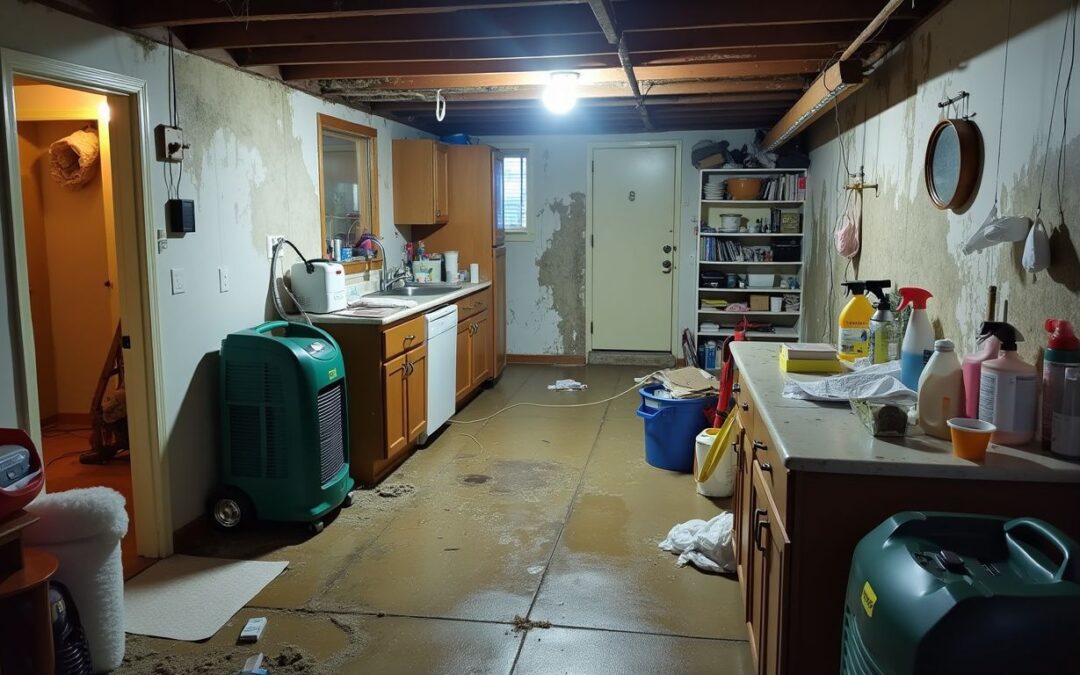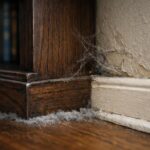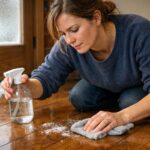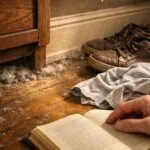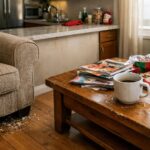After a hurricane, many house owners and parents face a big problem: how to clean up and make their homes safe again. Hurricanes bring water damage, mold growth, and contamination that need immediate attention.
It’s vital to know the right way to clean after a hurricane.
One key fact is that removing standing water fast can stop mold from growing in your home. This article will guide you through steps like wearing protective gear such as n95 masks, inspecting for structural damage with flashlights, using dehumidifiers to dry out spaces like basements, and choosing the correct disinfectants for different surfaces including countertops.
You’ll learn how to tackle these tasks safely and effectively.
Stay safe while reading on!
Key Takeaways
- House owners should wear N95 masks, gloves, and boots for protection during cleanup after a hurricane to avoid contamination.
- It’s essential to remove standing water quickly with sump pumps or buckets to prevent mold growth in homes.
- Using EPA-registered disinfectants on surfaces after cleaning them with soap and water ensures killing germs effectively.
- Drying out buildings promptly with dehumidifiers and fans can stop mold from starting within 24 to 48 hours post-hurricane.
- Inspecting the home carefully for structural damage before cleanup and documenting all damages helps when filing insurance claims.
Prioritize Safety
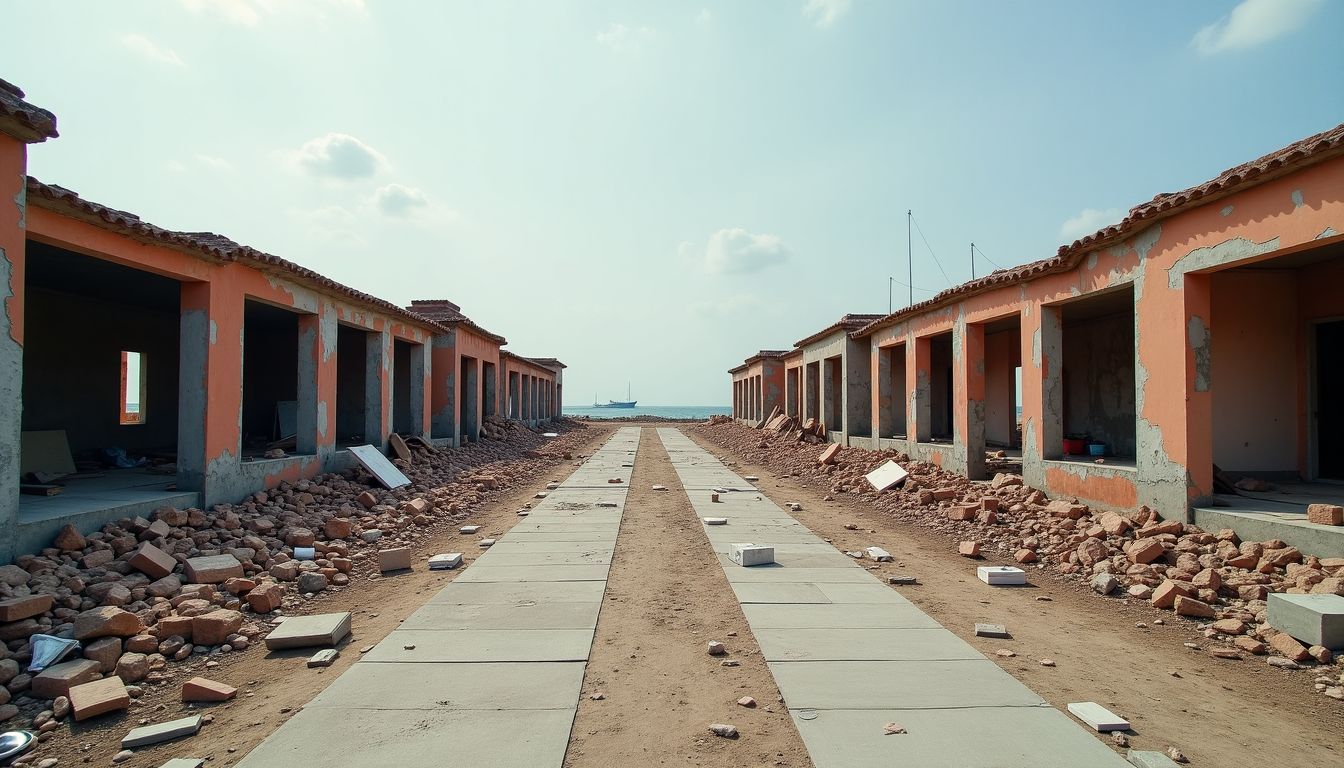
Before starting the hurricane cleanup, everyone must wear safety gear. Checking for any damage to the structure is also crucial to avoid accidents.
Wear protective gear
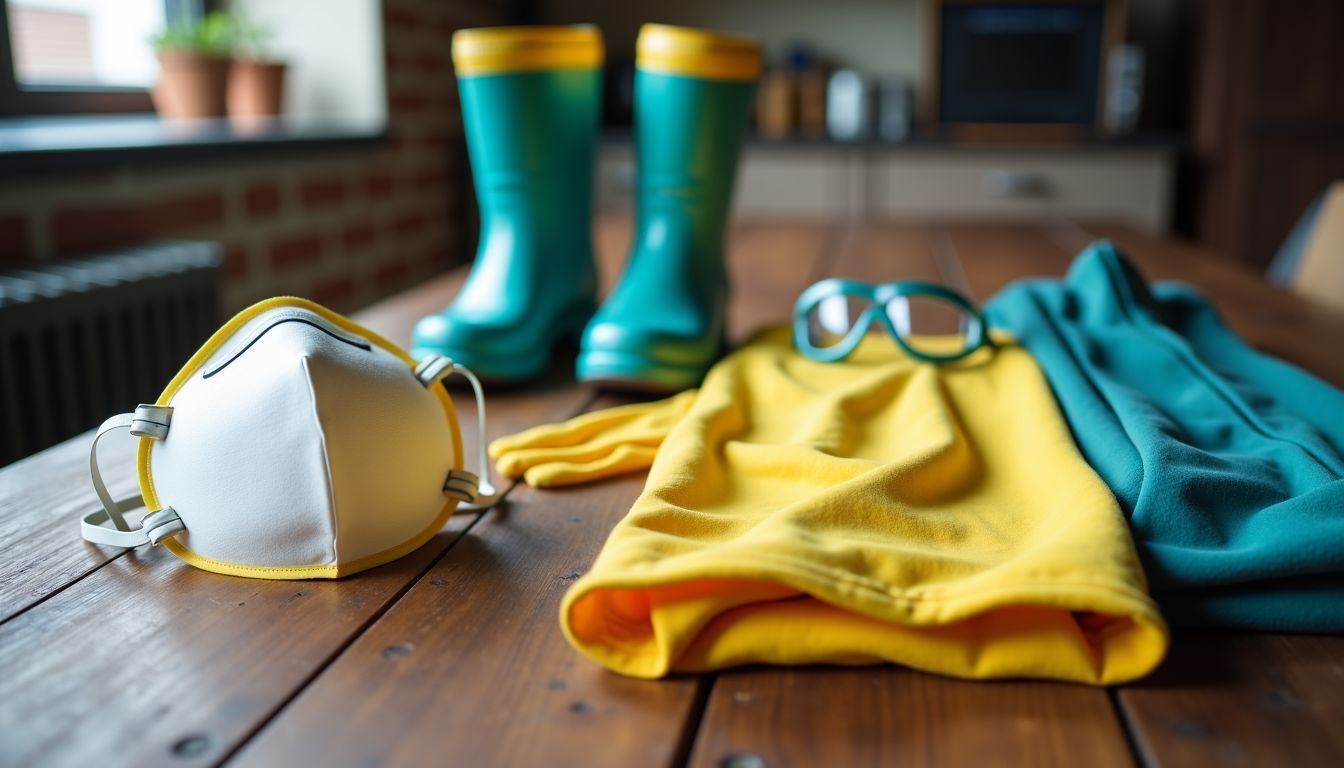
House owners and parents must wear protective gear to stay safe during hurricane cleanup. They should put on N95 respirators to keep harmful particles out of their lungs. Chemical-resistant boots and gloves protect against hazardous substances found in floodwaters.
It’s also important to cover up with long-sleeved shirts, long pants, and goggles for eye protection. Choosing closed-toe shoes or even better, steel-toed boots, adds an extra layer of safety.
Mixing bleach with ammonia can create toxic vapors; therefore, understanding the right cleaning chemicals is crucial. After gearing up properly, inspecting the home for structural damage comes next.
Inspect for structural damage
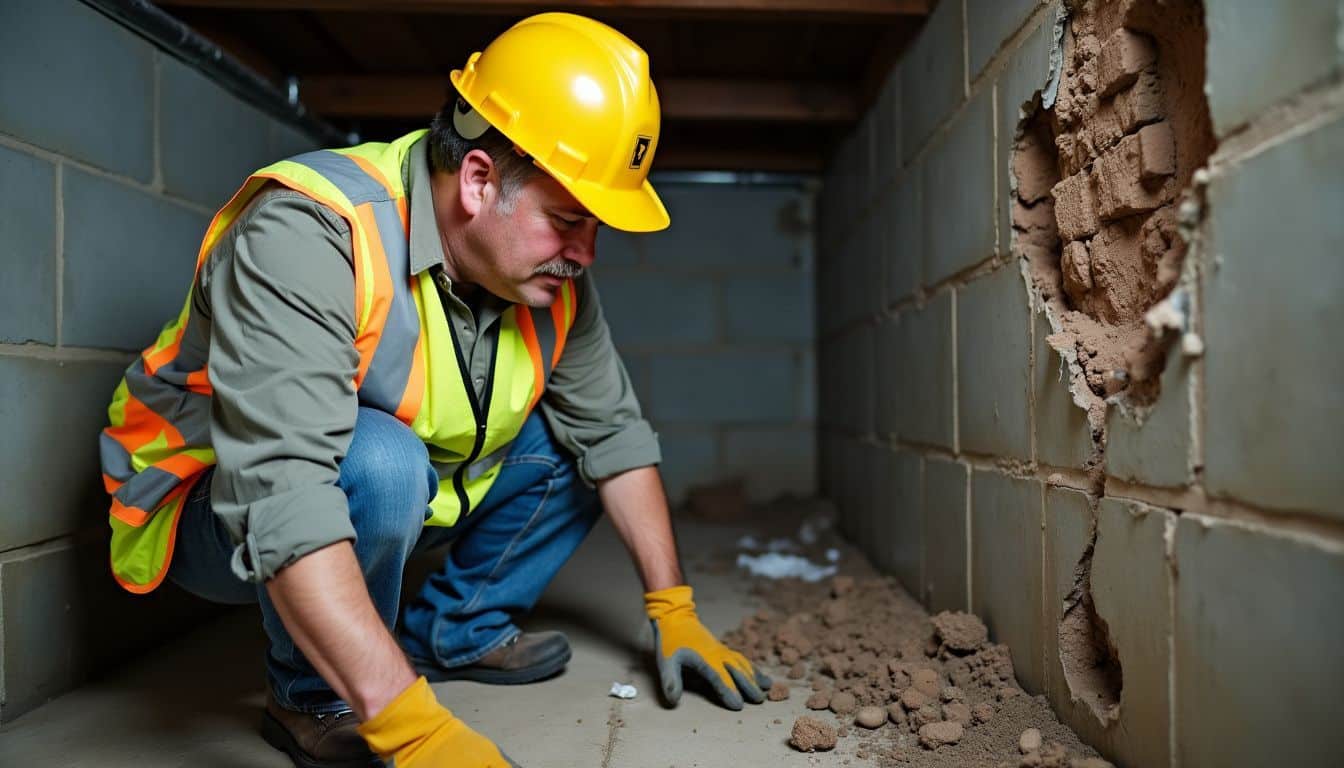
After putting on the right safety gear, house owners and parents should next check their homes for any structural damage. This crucial step needs a careful look at both the inside and outside of the building.
They must watch for signs like cracks in walls or foundations, doors that won’t open properly, and sagging floors or roofs. These issues can point to serious problems that might not be safe to fix without professional help.
Calling in experts such as structural engineers or experienced contractors is wise before proceeding with cleanup efforts. These professionals can identify hazards like weak walls or damaged electrical systems that could pose risks during cleaning.
For families impacted by natural disasters, ensuring their home is structurally sound before moving on to mop up floodwater or removing debris safeguards against further harm. Proper assessment also helps when filing insurance claims, offering a clear record of the hurricane’s impact on the property.
Assess and Document Damage
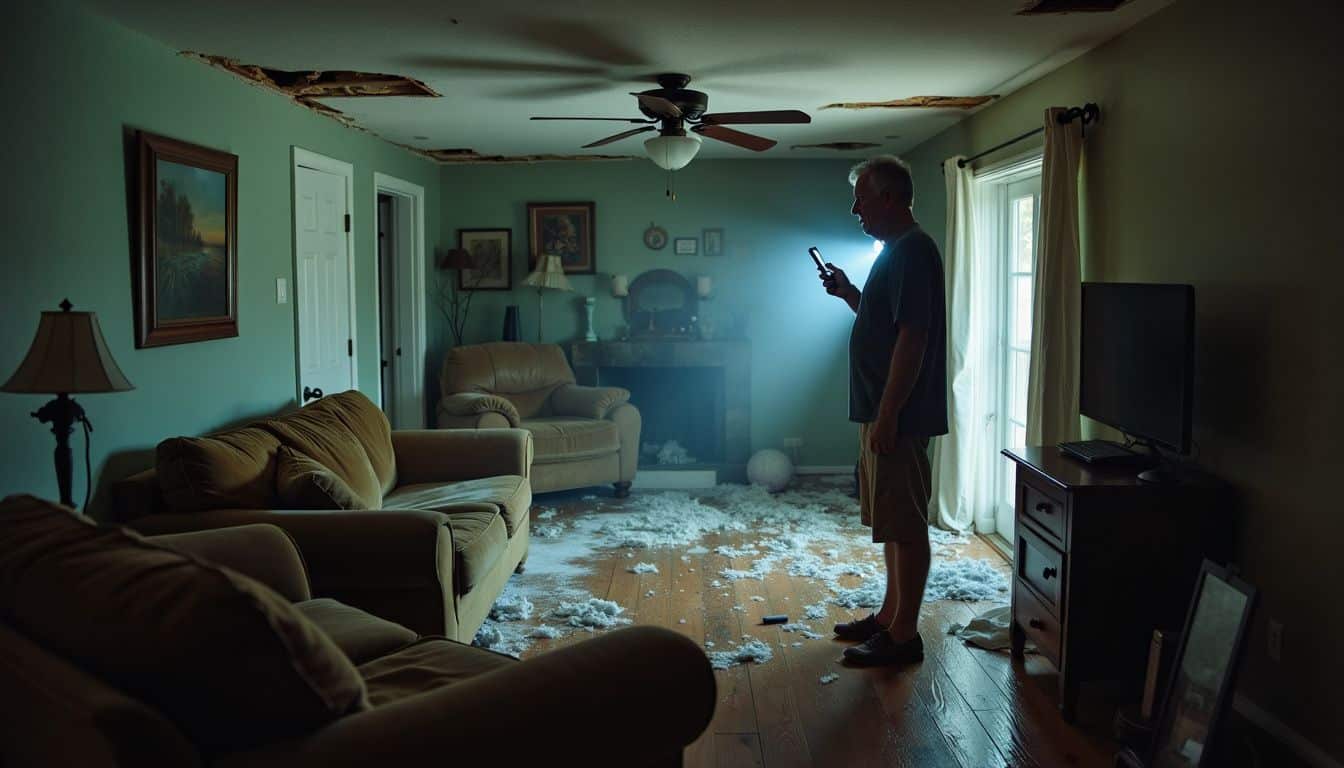
After a hurricane hits, homeowners need to look over their property carefully, both outside and inside. They should take pictures or videos as proof of the harm for insurance purposes.
Check exterior and interior

House owners should first inspect the outside of their homes for damage. Look carefully at roofs, windows, and doors. Check for broken glass or damaged frames. Notice if any trees need pruning by an arborist to prevent future issues.
It’s crucial to look at all angles, including eaves, flashing, gutters, and downspouts for signs of harm.
Moving inside, parents must ensure the safety of living spaces for their families. Water may have entered causing potential hazards around electrical outlets or appliances that require an electrician’s attention before use again.
Take high-quality photos or videos during both exterior and interior checks. These visuals are critical for documenting losses in insurance claims.
Record losses for insurance claims
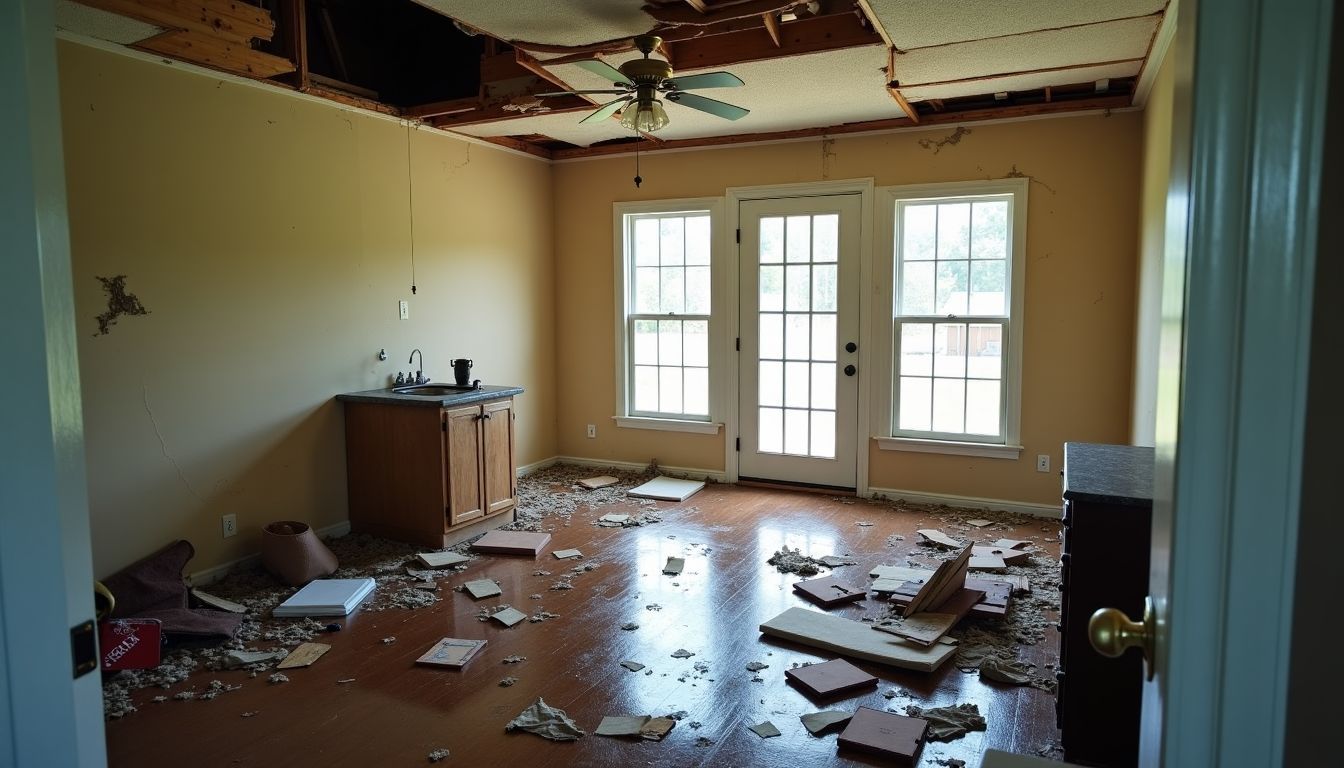
House owners and parents must take careful steps after a hurricane to ensure their insurance claims are solid. They should start by inspecting both the outside and inside of their homes for damage.
Capturing photos or videos can provide undeniable proof of the destruction caused. Such evidence is critical, as it supports the documentation needed for insurance claims.
People should keep a detailed diary of all damages, noting dates and specific harm observed. Gathering insurance policies, receipts for repairs, and estimates plays a crucial role in this process.
Homeowners need to contact their insurance company quickly with all gathered documentation in hand. Following up with an adjuster regularly helps track the status of claims. Recording any temporary fixes or losses is also essential for reimbursement purposes.
This careful attention to detail ensures families protect their investments and secure the correct aid from insurers after severe weather strikes.
Cleaning and Disinfection Strategies
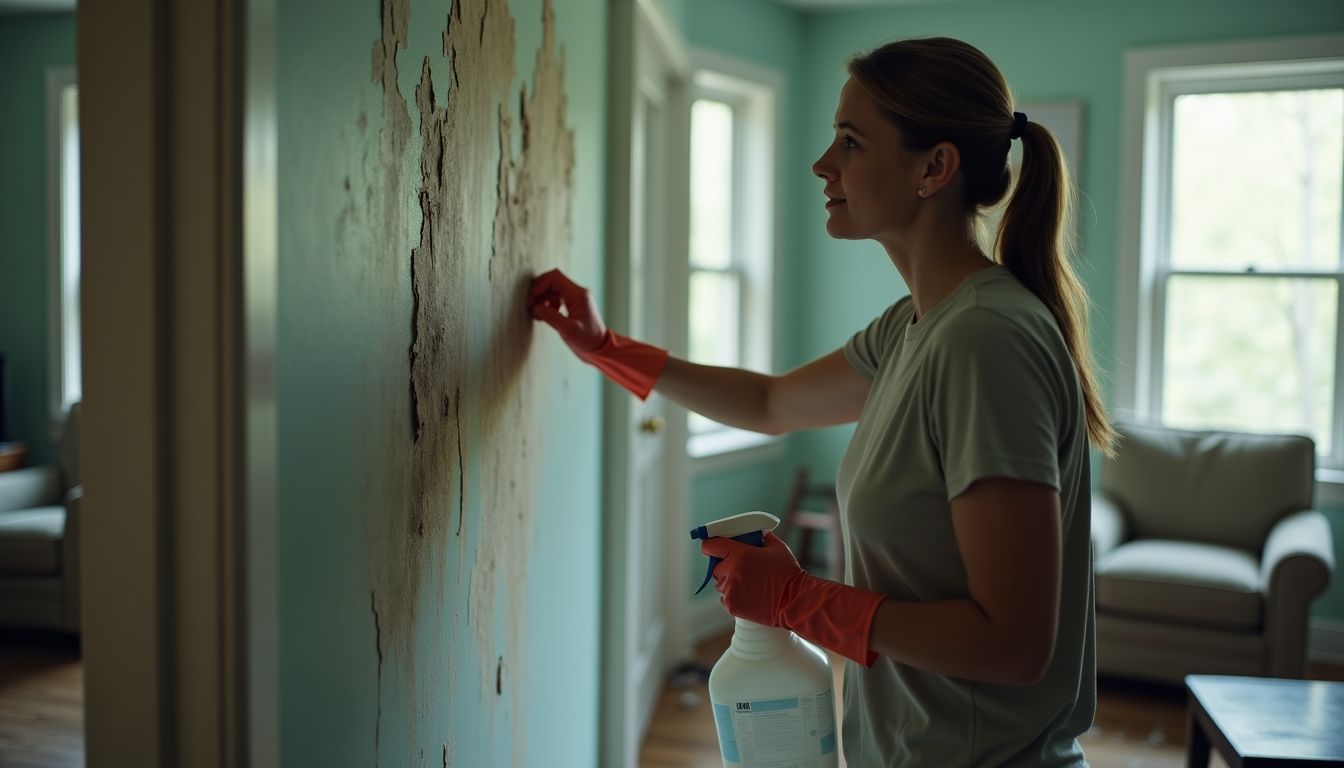
After a hurricane, cleaning up starts with removing rubbish and excess water. Then, applying the right germ-killing solutions to surfaces ensures a safe environment.
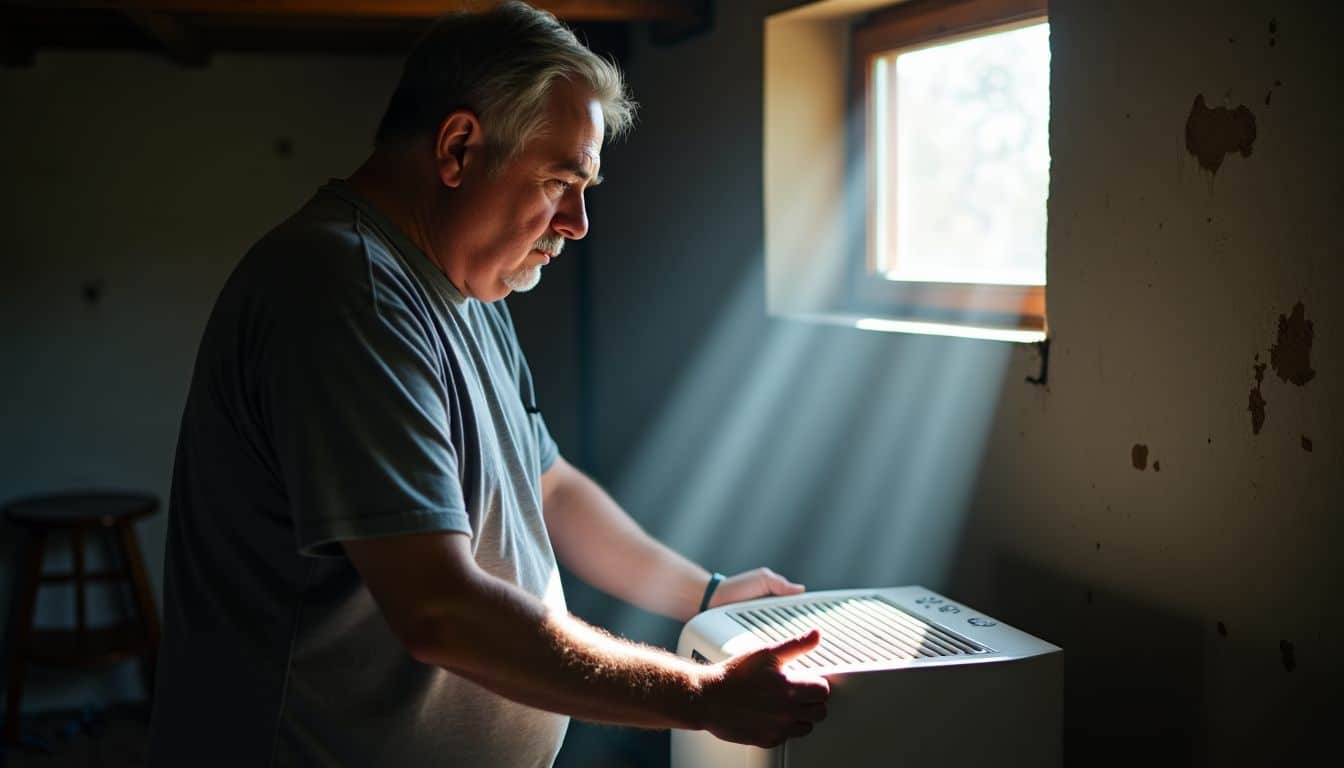
Remove debris and water
House owners and parents face a big task after a hurricane hits. They must clear out debris and pump out water from their homes. Debris removal is the first step to help prevent further damage and make space for repairs.
People use tools like shovels, rakes, and bags to pick up broken branches, shattered glass, and other wreckage scattered by the storm.
Next comes getting rid of standing water. This is urgent because floodwater often carries germs and sewage that can harm your family’s health. House owners use sump pumps or buckets to quickly remove this contaminated water.
They wear rubber boots and gloves for protection during this process. Removing soaked items like carpets or drywall is also necessary since these can’t be cleaned easily. This way, they tackle mold remediation head-on by eliminating potential breeding grounds for mold in their homes.
Use appropriate disinfectants for surfaces
Clean every surface with soap and water first. This step prepares them for disinfection. After cleaning, apply EPA-registered disinfectants to kill germs on surfaces around the house.
It’s crucial to choose the right products that can fight against the spread of disease, especially after a hurricane has left homes flooded and dirty.
For high-touch areas like doorknobs, light switches, and countertops, use bleach solutions carefully made from 5% to 9% unscented household chlorine bleach. Always ensure rooms are well-ventilated while you’re using these strong chemicals.
Never mix bleach with ammonia because it creates toxic vapors harmful to both adults and kids in the home. Following these safety precautions helps keep everyone safe during disaster relief efforts.
Address Moisture and Prevent Mold
After a storm passes, tackling moisture quickly keeps mold at bay. Fans, dehumidifiers, and sunlight are your allies in drying out rooms effectively.
Dry out buildings
Drying out buildings quickly stops mold growth, which can start within 24 to 48 hours after they get wet. Homeowners should use moisture removal tools like dehumidifiers and fans. Dehumidifiers pull water from the air, reducing dampness.
Fans help by moving air around, speeding up the drying process.
Opening windows and doors improves air circulation, making wet areas dry faster. It’s essential to throw away items too soaked to save, such as stuffed toys or carpets. This prevents mold from spreading.
Cleaning remaining wet objects with hot water and detergent also helps in keeping the house safe for families.
Treat areas to prevent mold growth
After hurricanes, houses often stay wet. This can make mold grow quickly. People must act fast, within 24 to 48 hours, to stop this. They should use products that stop mold, like EC3 Mold Solution, on walls and floors once they are dry.
It’s important because mold can damage a home and harm health.
If someone smells something musty after cleaning up, it might mean there’s hidden mold. They shouldn’t just paint over or ignore it. Removing soaked wallboard or insulation is necessary sometimes.
Experts in getting rid of mold can help if the problem seems big. House owners also need to keep air moving and use machines that take moisture out of the air to keep their homes dry and safe for everyone living there.
Conclusion
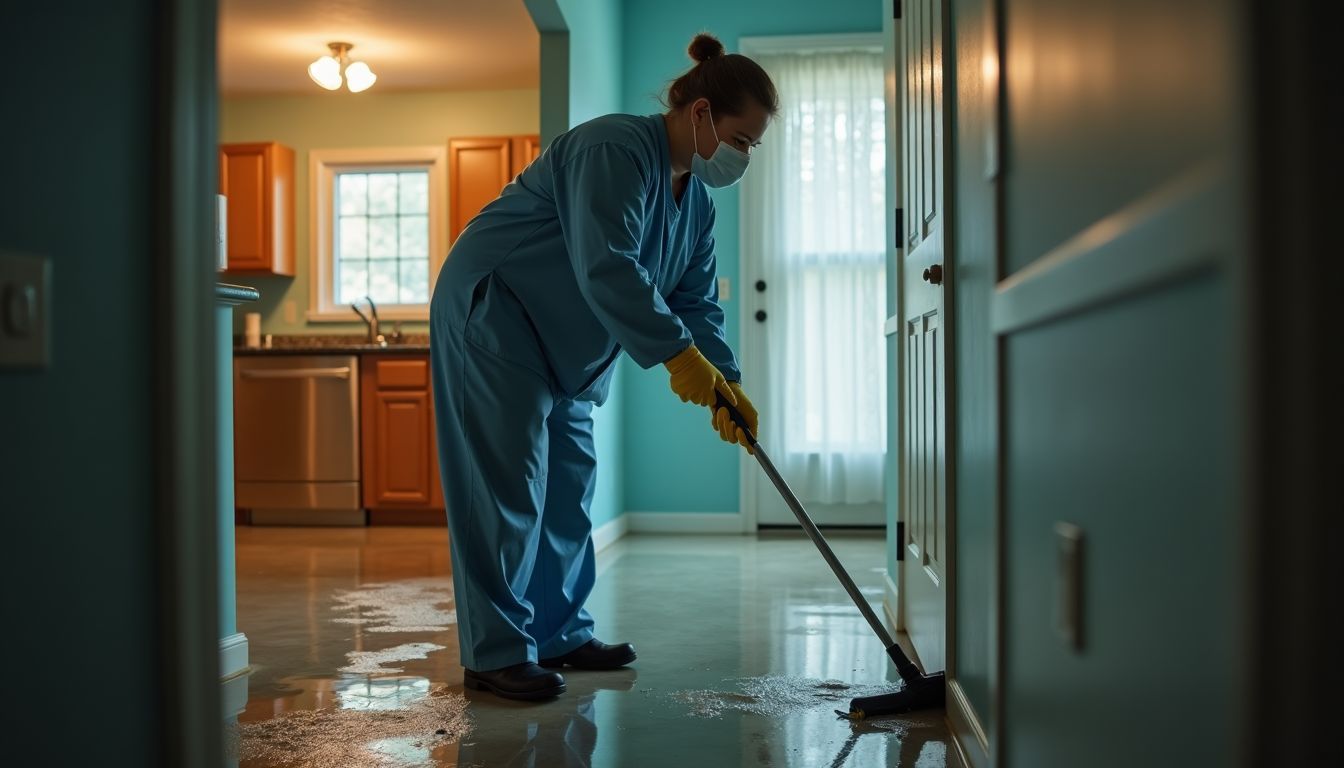
Cleaning up after a hurricane takes effort. House owners must wear safety gear like gloves and goggles to protect themselves. They need to check their homes for damage and remove water quickly.
Using the right disinfectants cleans surfaces well. Drying out rooms and stopping mold from growing are crucial steps. With these actions, people can make their homes safe again after flooding damages them.
Book cleaning services online with My Cleaning Angel. A Heavy Duty cleaning is the perfect one for this kind of cleaning. It’s easy, fast and you get the price right away before booking.
FAQs
1. What steps should I take to clean and disinfect after a hurricane?
After a hurricane, you need to wear personal protective equipment (PPE) while cleaning up solid waste disposal areas that have been affected by flooding. It’s also essential to prune damaged trees or branches.
2. How does emergency management fit into the post-hurricane cleanup process?
Emergency management plays a critical role in coordinating cleanup efforts after a hurricane. They provide guidelines on how to safely dispose of waste and manage flooded areas, ensuring people are protected during the process.
3. Why is it important to use PPE during the cleanup process?
Using Personal Protective Equipment (PPE) is crucial for your safety when handling potentially hazardous materials from waste disposal sites or contaminated flood water.
4. Are there any specific tools I should have ready for post-hurricane cleanup?
Yes, having chargers for battery-powered devices like flashlights can be beneficial during power outages caused by hurricanes. Also, tools like pruners will help handle tree damage effectively.

